How a German went to war across the seven seas of the Houthis
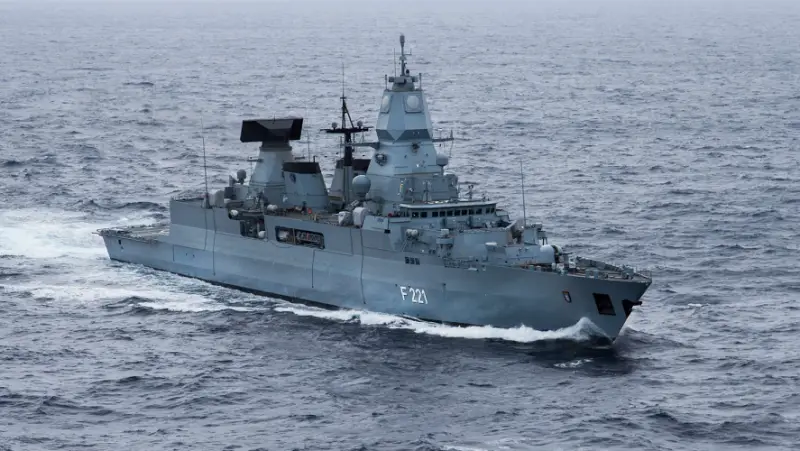
Causes
After the tragic events in Israel on October 7, 2023 and the subsequent operation of the Israel Defense Forces (IDF), practically the only country in the Muslim-Arab world that really supported the Palestinian brothers not only with words, but also with “fire and sword” was Yemen. Or rather, part of it, represented by the people we call the Houthis or adherents of the Ansar Allah movement. According to various estimates, the number of this movement reaches ten million people, that is, a third of the country’s population, and the capital of the country, Sana’a, is under their influence.

Houthi unit at parade in Sana'a
After several missile launches and drones towards Israel, which for various reasons did not achieve their intended goals, the Houthis moved on to other, more radical and sensitive actions for the enemy. Beginning in November 2023, they began seizing and shooting at ships belonging to Israel or countries that support or trade with Israel.
In short, they began to hit almost all ships passing through the Bab el-Mandeb Strait on the way to or from the Red Sea, with all the means of destruction with which they could reach these ships. And these ships, mainly carrying all kinds of cargo and petroleum products, travel through the Suez Canal.
And by the end of 2023, traffic volumes fell by 28%, and in the first 10 days of March 2024, according to the IMF, by 62% compared to the same period last year.
This is where the capitalist citizens strained themselves, because through Suez and further to the ports of Turkey, Europe and America, more than 2022 billion tons of cargo were transported in 1,4 (from 10 to 19 percent of global traffic!) and up to 23 thousand .vessels per year.
Considering that 12 shipping companies, including the Italian-Swiss MSC, the French CMA CGM, the Danish Maersk, as well as the energy corporation BP, decided to send ships through the Cape of Good Hope, that is, bypassing, the delivery time of goods increased to two weeks.
Goals
The rapid loss of money had to be stopped urgently.
And so, on the night of December 18-19, 2023, the United States announces the start of Operation Prosperity Guardian. The purpose of the operation under the auspices of the multinational Joint Maritime Force is to ensure the safety of navigation in the Red Sea. Great Britain, Canada, Bahrain, France, Italy, the Netherlands, Norway, Spain and the Seychelles immediately signed up to fight alongside the Americans. Of course, without fleet Seychelles nothing would have worked out...
And jokes aside, the Americans sent a fairly powerful aircraft carrier group to the region, led by the aircraft carrier USS Dwight D. Eisenhover CVN-69.
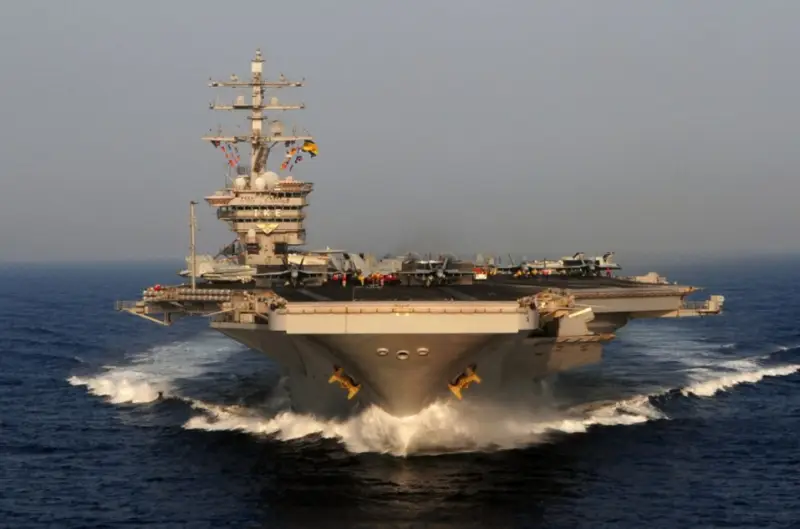
In addition to this hulk, the group includes:
– Ticonderoga class cruiser;
– four Arleigh Burke class destroyers;
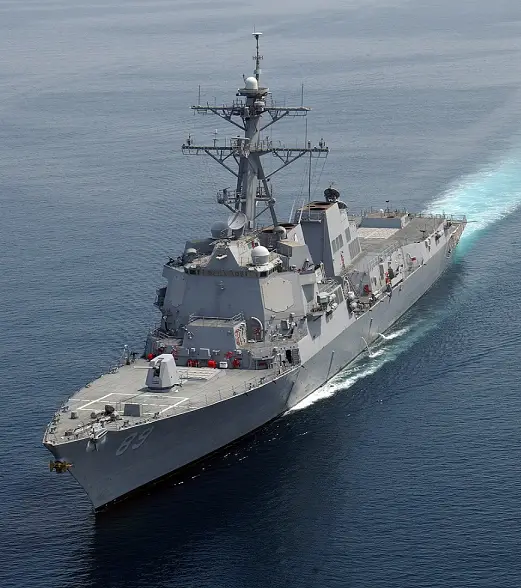
- Ohio-class nuclear attack submarine.
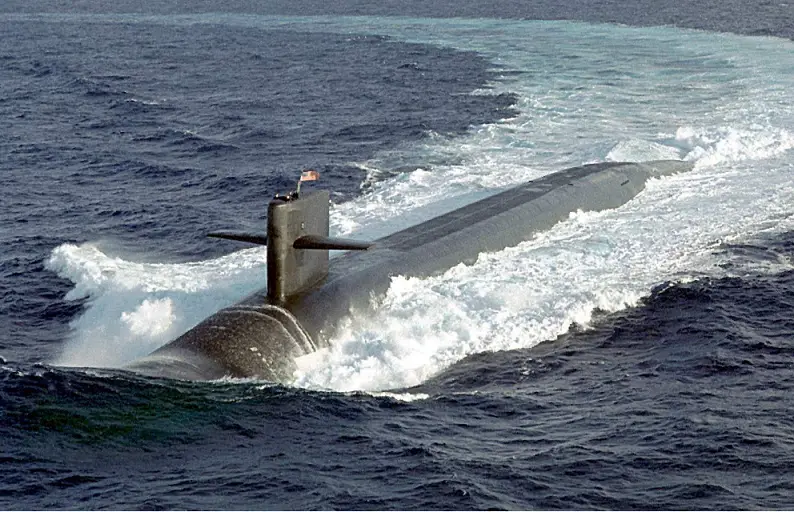
Well, where the States are, what about the once great Britain, which was represented by the destroyer HMS Diamond.
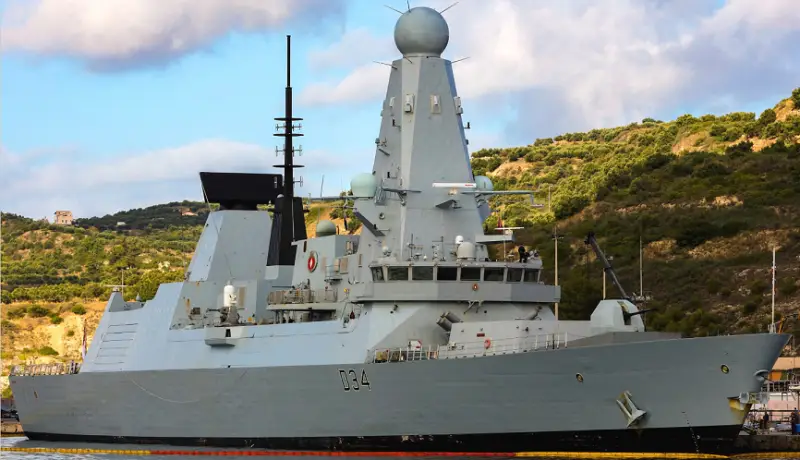
And on February 19, 2024, the foreign ministers of the European Union countries made an official decision that 27 European countries will take part in their own naval operation called EUNAVFOR (European Union Naval Force) Aspides, which means “Shield” in Greek.
27 countries – it was, of course, powerful. But so far only France, Belgium, Greece, the Netherlands, Denmark, Italy and Germany have sent their ships.
The mission of the operation: “to protect civilian ships in the Red Sea and the Strait of Aden from Houthi attacks. The mandate area extends beyond the Strait of Hormuz to the Persian Gulf inclusive.”
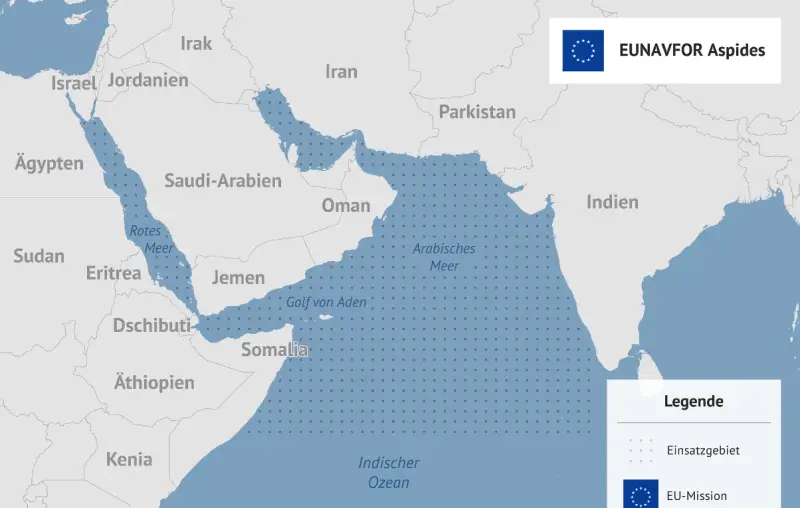
Map of the ship deployment zone (indicated by small dots) as part of Operation Aspides.
Facilities
Let's see in order which ships (pennant numbers are visible) were sent to complete the assigned task.
France
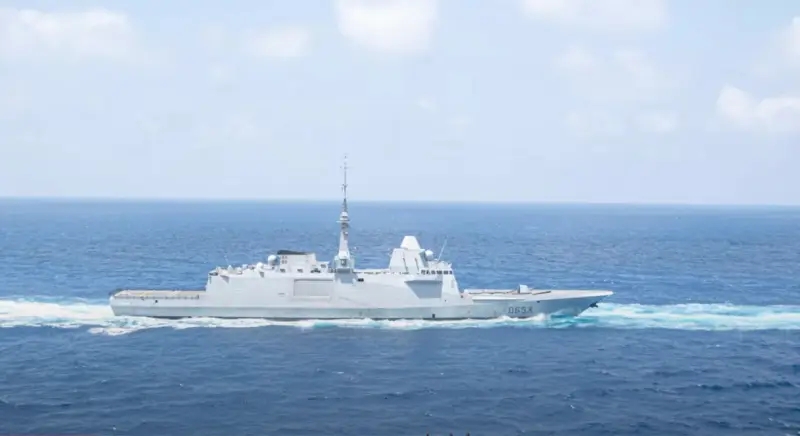
Frigate Languedoc, in the fleet since 2015.
Belgium
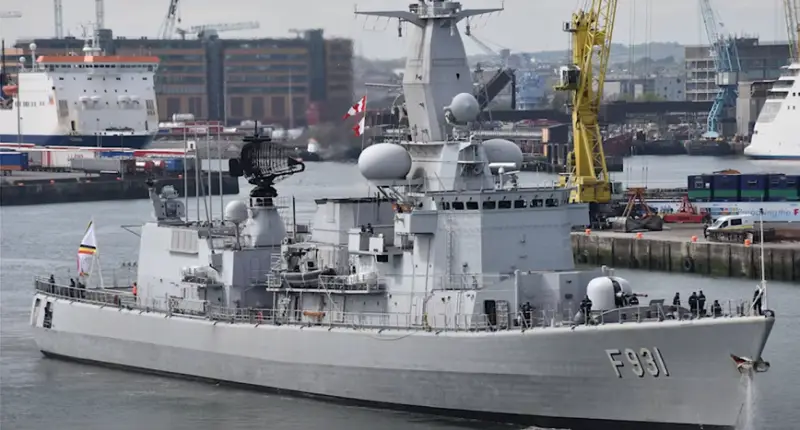
Frigate Louise-Marie, in the fleet since 2008. Prior to this, he served in the Royal Netherlands Navy from 1991.
Greece
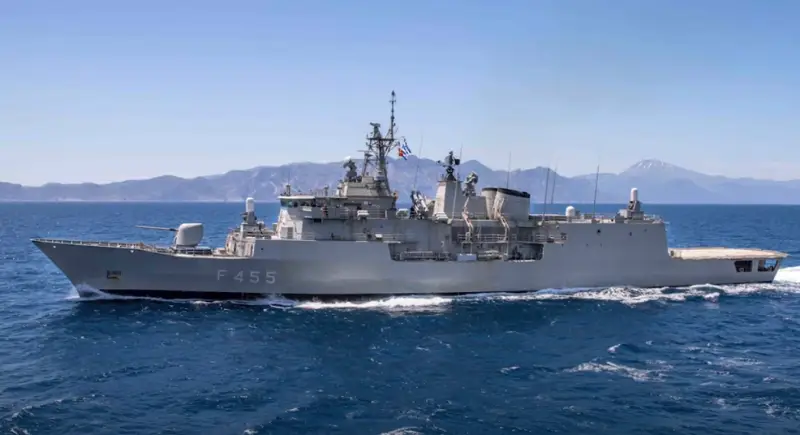
Frigate Hydra, in the fleet since 1992.
Netherlands
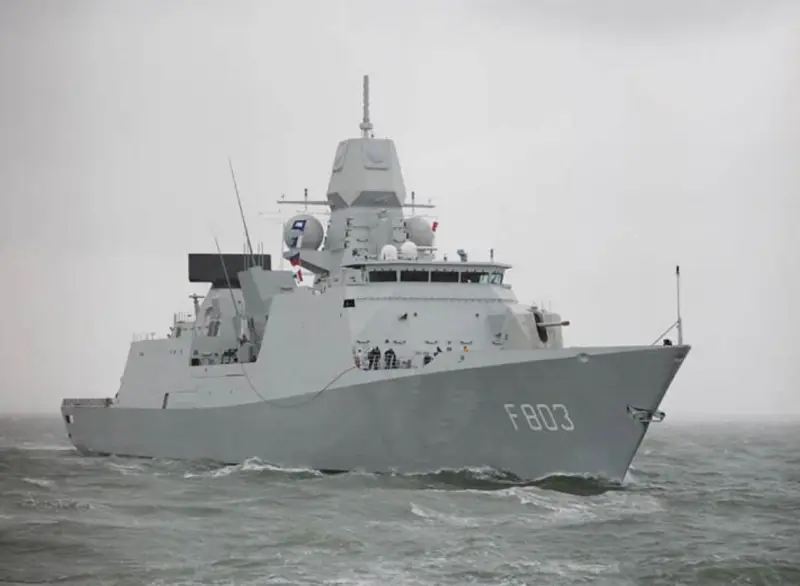
Frigate HNLMS Tromp, in the fleet since 2004.
Denmark
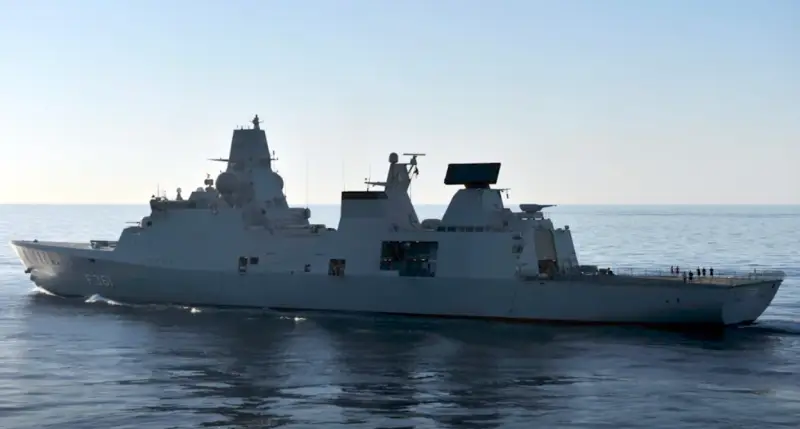
Frigate Iver Huitfeldt, in the fleet since 2012.
Italy
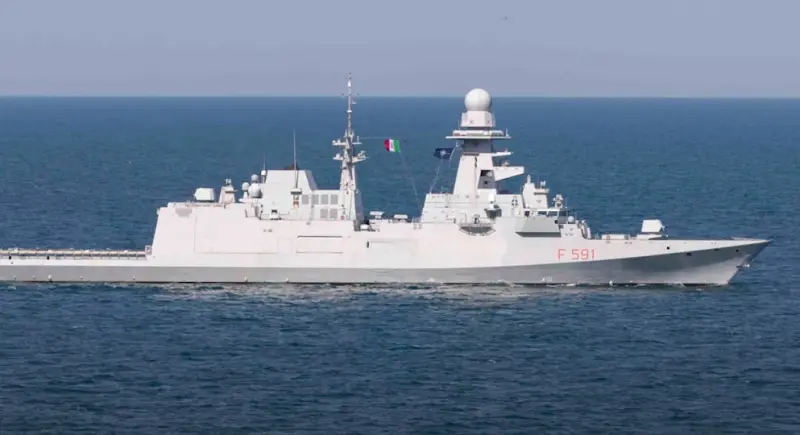
Frigate Virginio Fasan, in the fleet since 2012.
And here is our hero, representing Germany.
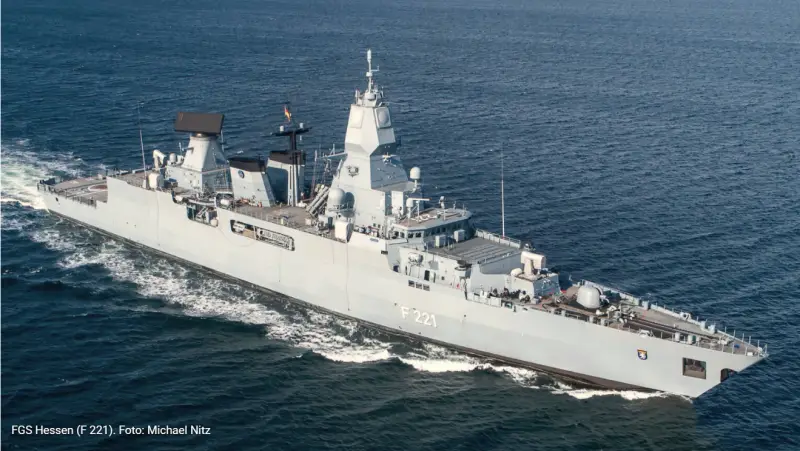
Frigate Hessen, in service since April 21, 2006.
History and characteristics of the ship
In the process of collecting material for the article, I learned an interesting thing. The ships and boats of the German Navy bear the names of federal states, cities and municipalities, as well as mountains and rivers. When a navy receives a new class of ship, state governments and mayors of cities and municipalities can express their interest in sponsoring one of the ships in that class. Interest in ship sponsorship is so great that there are more requests than available ships.
The official naming is then carried out by the Federal Minister of Defence. That is, the first ship, receiving a name, thereby fixes the name of the entire class. For example, three Type 124 frigates make up the Sachsen class, named after the lead ship of the same name.
In other words, frigates are named after federal states, fleet tankers are named after mountains, tenders are named after rivers, corvettes and destroyers are named after cities and towns.
The only exception is submarines. Traditionally, their names consist only of numbers. This goes back to the Kaisermarine. In this particular case, the frigate took the name of the Hamburg-class destroyer (service years 1968–1990), which in turn inherited the name Hessen, from a battleship that served from 1905 to 1945 in the Kaisermarine, then in the Reichsmarine and ended her life in 1960 as part of the USSR Navy.
So, the frigate Hessen (F 221) Type 124 was built at the Noordseewerke shipyard in Emden over four years, between 2001 and 2005, and was accepted into service in Wilhelmshaven on April 21, 2006 as the third ship of the Sachsen class.
The official purpose of ships of this class, according to the Bundeswehr, is “escort and escort, as well as control of maritime space.” In this case, the main task is considered to be, as a command post ship, to carry out, firstly, air defense, in order to protect both naval units and ground forces, as well as the fight against surface and underwater targets. In February of this year, it was added “to fight against unmanned kamikaze boats.”
Today, Sachsen-class frigates are considered the most modern and combat-ready ships of both the German Navy and the fleets of the European allies. At least that's what the Germans say. The rest don't seem to be arguing yet.
To carry out its main mission, air defense, the frigate is equipped with the Radar SMART-L (Signal Multibeam Asquisition Radar for Tracking, L band) system, with which it can detect and track more than 1 targets within a radius of up to 000 kilometers simultaneously.
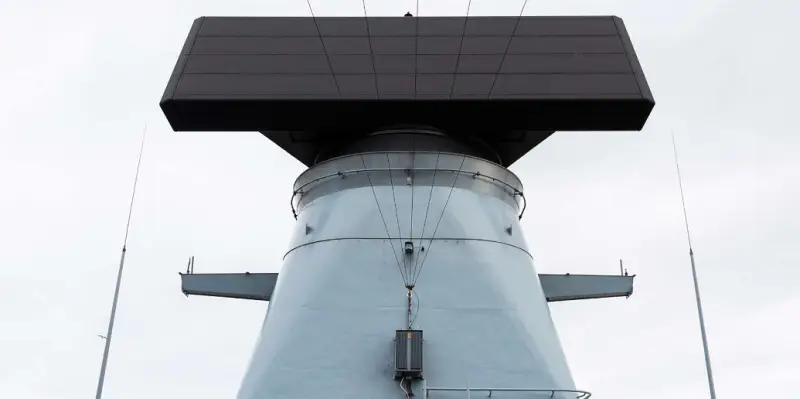
Paired with SMART-L is a radar with an active phased array APAR (Active Phased Array Radar).
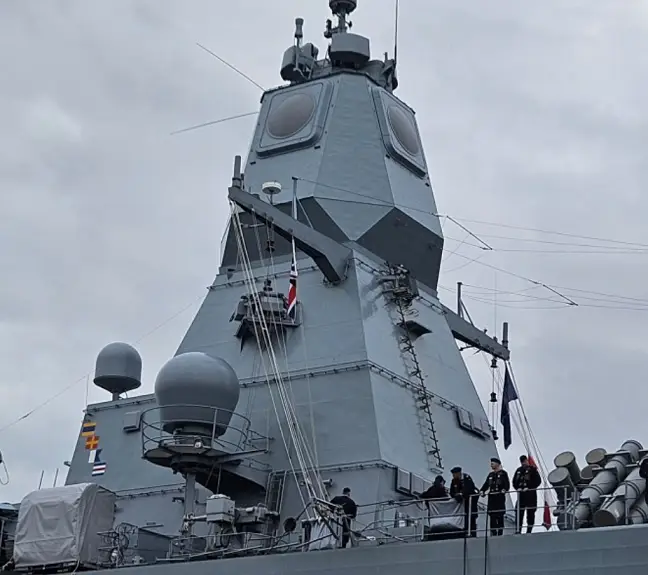
The APAR consists of four planar fixed phased array antennas, each with more than 3 transmitter/receiver elements that divide the azimuth range into four 000° sectors. All antennas can simultaneously monitor their sectors, as well as simultaneously monitor multiple marine and aviation goals within each sector.
Of the 1 automatically tracked targets, up to 000 can be selected, which are priority and subject to destruction. The received data is transmitted to the control and weapons system of the ship's operational center.
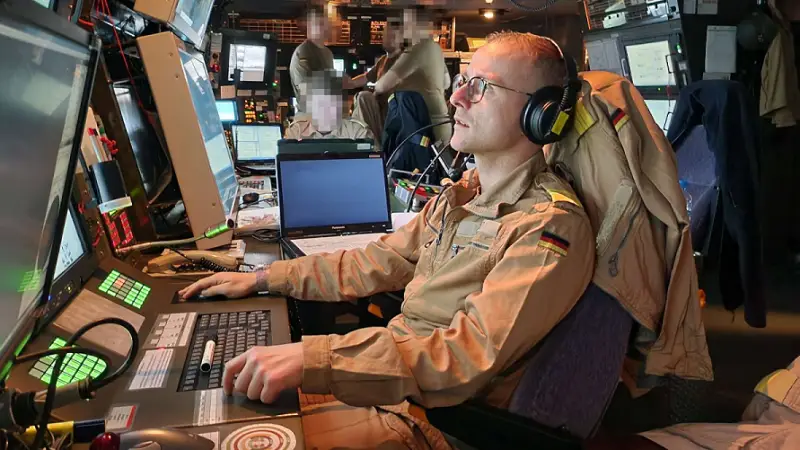
Operations center of the air situational awareness and electronic warfare group of the frigate Hessen
The ship's computer core is the Weapons Command and Deployment System (FüWES) with powerful computing capabilities: it processes all data from radars and other sensors, as well as information provided by allied ships. The system is supported by more than a dozen on-board computers.
The frigate's air defense includes three types of anti-aircraft guided missiles as weapons, which allows it to provide protection for protected ships in three echelons.
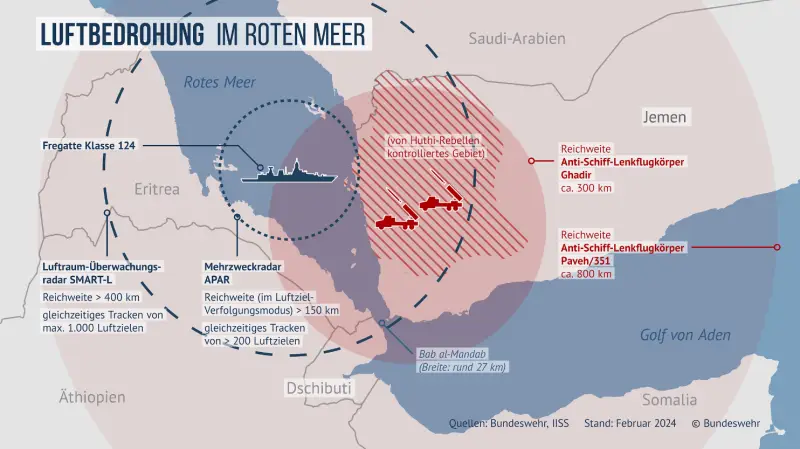
German sources state the range of destruction of targets with the “more” symbol, maybe this is so...
So, rockets:
SM-2 (Standard Missile2) Block IIIA, with a range of more than 160 km.
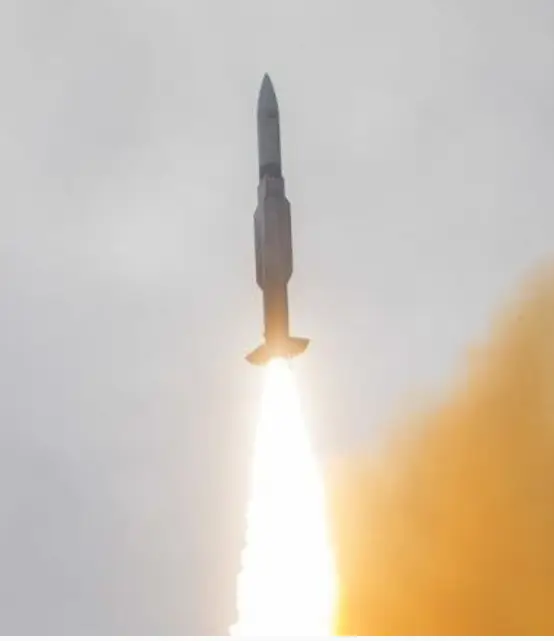
RIM-162 ESSМ (Evolved Sea Sparrow Missile), with a range of more than 50 km.
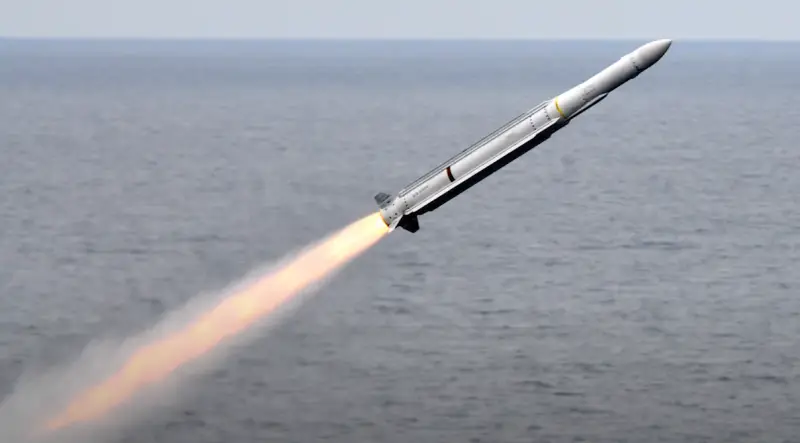
RAM (Rolling Airframe Missile), with a range of more than 10 km.
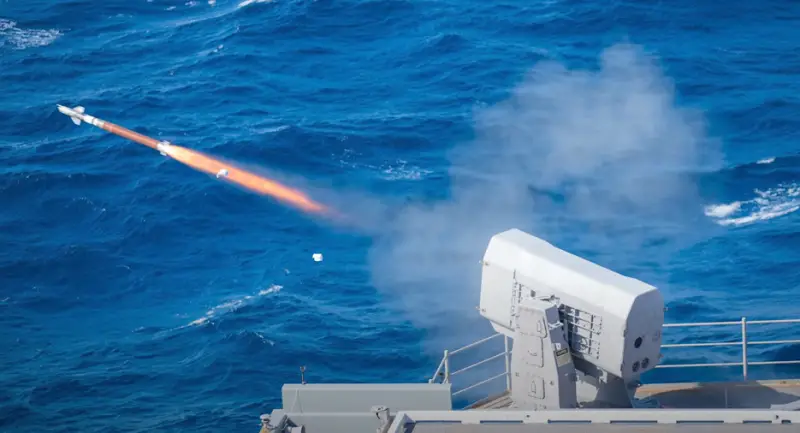
The SM-2 Block IIIA and Sea Sparrow missiles are located and launched through the Mk 41VLS universal launcher, which has 32 cells. Theoretically, Hessen can launch 32 SM-2 Block IIIA or 128 See Sparrow (4 per cell).
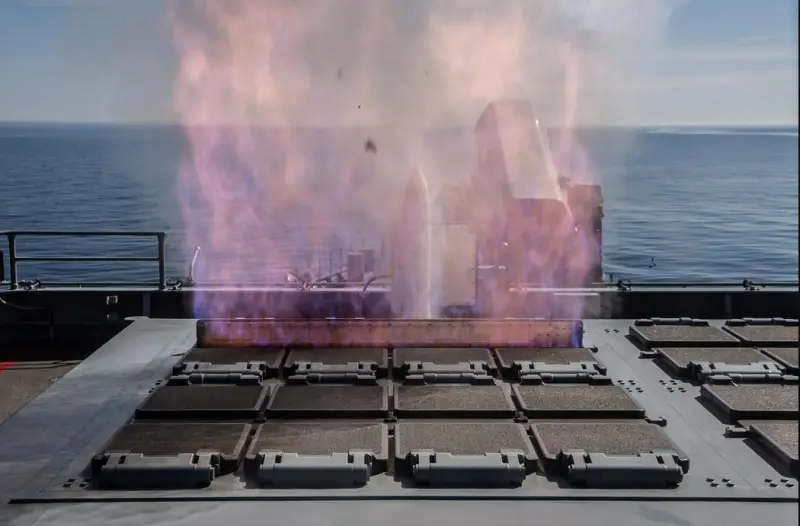
Two RIM-116 launchers allow the launch of 42 pieces of RAM (Rolling Airframe Missile).
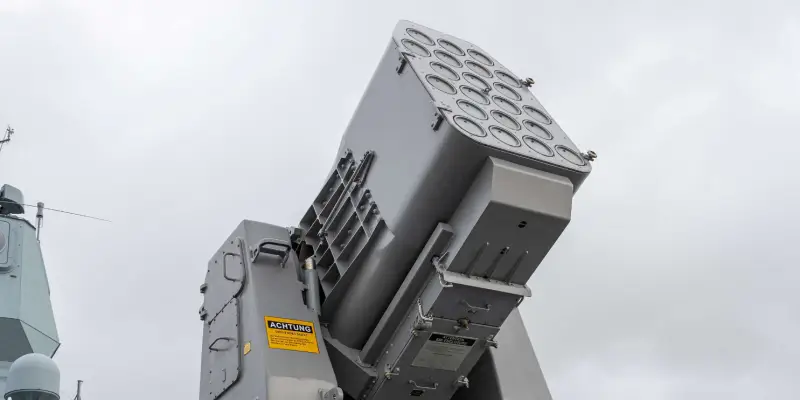
In fact, according to experts, Hessen went on missions with the following ammunition:
SM-2 Block IIIA – 24 pcs.
RIM-162 ESSМ (Evolved Sea Sparrow Missile) – 32 pcs.
RAM (Rolling Airframe Missile) – 42 pcs.
Total: 98 pcs.
Four MASS (Multi Ammunition Softskill System) decoy launchers are used directly for self-defense.
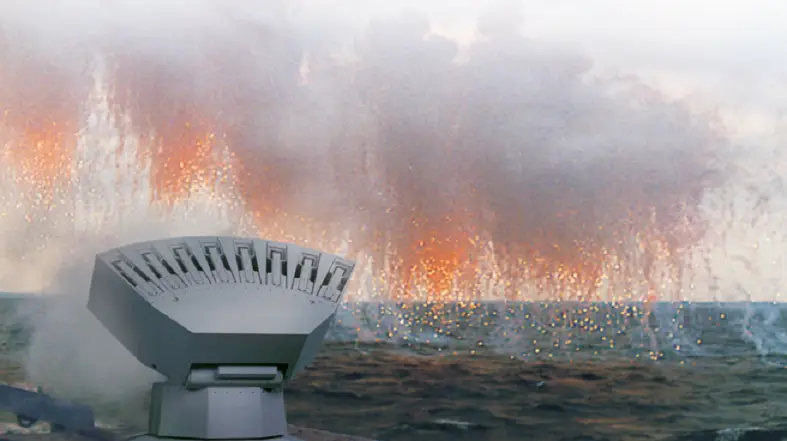
The ECM/ESM FL 1800 S II complex is used as the so-called combined electronic combat control system.
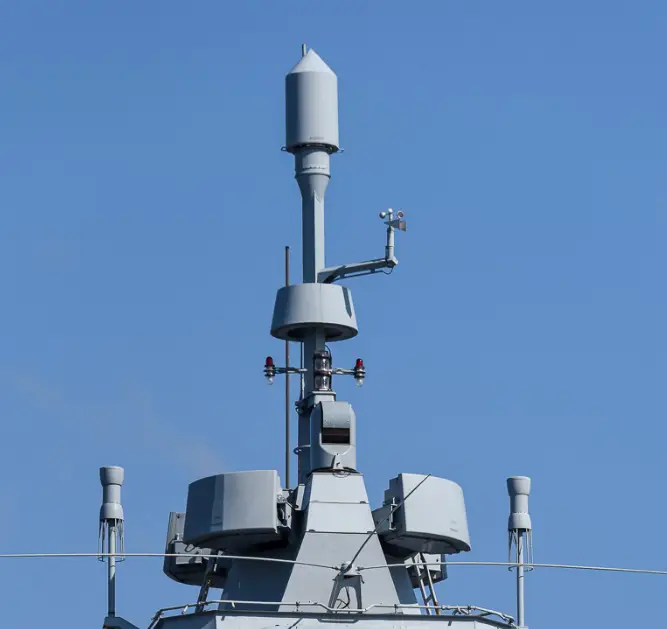
I dwelled in some detail on the review of the ship’s air defense system, since it was precisely this strong point that was supposed to ensure the 100% successful completion of the assigned task - the destruction of everything that flies towards the sea from the Yemeni shores.
In addition to the air defense system, the ship is also armed with a 76 mm main caliber gun, two naval 27 mm Rev MLG 27 machine guns, four 12,7 mm machine guns, 2x4 FK-Starter launchers for RGM-84 Harpoon anti-ship missiles, two three-tube torpedo tubes MKL 32 for MU90 torpedoes.
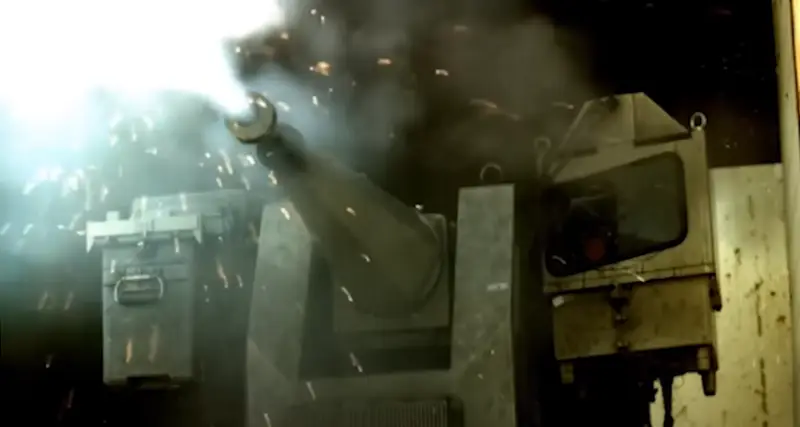
Operation of the 27 mm Rev MLG 27 assault rifle
In addition to this there are two Sea Lynx Mk88A helicopters.
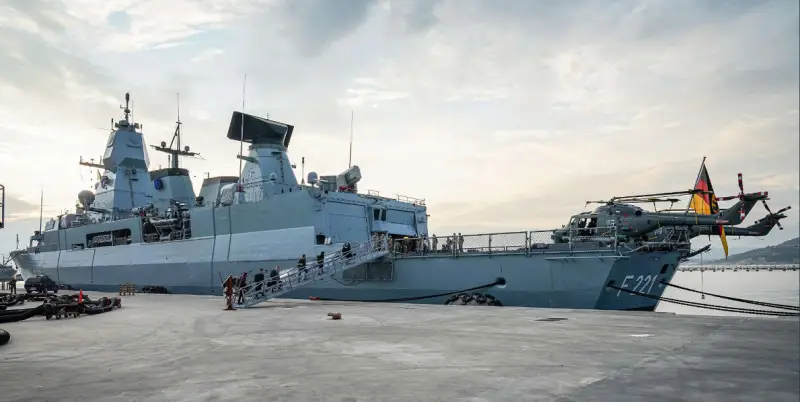
Preliminary results
So, on February 8, 2024, at 10 o’clock in the morning, the frigate Hessen solemnly, in the presence of distinguished guests, representatives of the leadership of the federal state, representatives of the Bundestag, of course, correspondents and television, to the sounds of an orchestra, left the harbor of Wilhelmshaven and set off for the Red Sea.
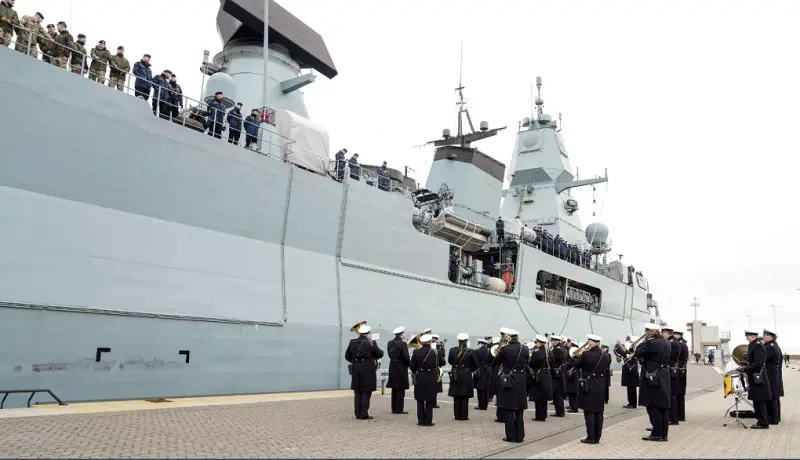
Seeing off
Along the way, while stopping at a base on the island of Crete on February 20, Defense Minister Boris Pistorius boarded the ship, accompanied by all of us “dearly beloved” Mrs. Marie-Agnes Strack-Zimmermann, who is the Chairman of the Defense Council in the Bundestag.

Pistorius and M-A. Strack-Zimmermann aboard the frigate Hessen
The distinguished guests talked with representatives of the team, the minister gave a parting speech in which he called the participants in the operation “great warriors,” noting the excellent training and technical equipment of the ship and crew. He also expressed confidence in the success of the mission: “We can do it, we will do it,” the minister said, adding that he was full of respect and admiration for the work and dedication of the mission participants.
Remarkably, the Germans were in a hurry to secure their place among the first defenders of civil navigation in the Red Sea. After all, only on February 19, 2024, the European Union decided to conduct a naval operation called Aspides. And in the Bundestag, the decision on Germany’s participation in this operation was voted only on February 23, 2024. The ship left the base in Germany on February 8.
And so on February 25-26, television, the Internet and the press burst with information that the frigate Hessen, immediately upon arrival in the designated area, entered into battle with a Houthi drone and heroically destroyed it. True, after some time they reported that it didn’t seem to be destroyed, but only fired at, and it seemed that it was not a Houthi at all, but someone unknown, and then they clarified that it was an MQ-9 Reaper reconnaissance drone, controlled from the central command center USA in Bahrain - not registered and with the IFF transponder turned off.
And Hessen hit the Reaper with two SM-2 Block IIIA missiles with an expected probability of destroying the target of 90%! The result is zero.
Officially, there is some kind of indistinct muttering about how they simply didn’t hit, or how the “friend or foe” system worked at the last moment, but in principle, this happens, war...
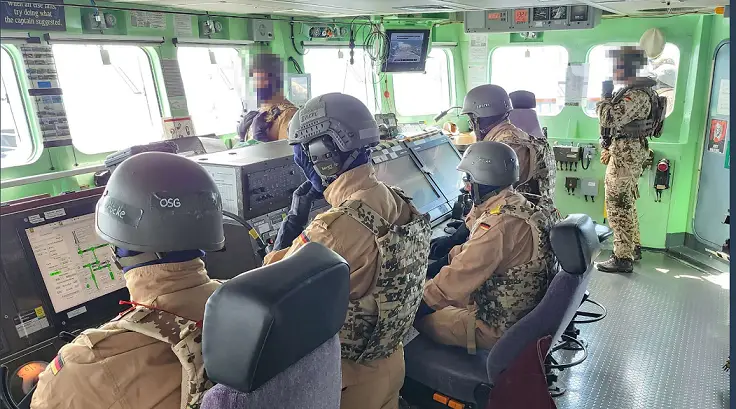
On the bridge of the frigate Hessen
From the official parliamentary briefing:
The press continues to note that the frigate is one of the best that Germany has in service - with the best equipment, ammunition and the highest level of crew training.
What the ship and crew lack is military experience. Until now, the German Navy usually had to actually use ships to chase away pirates, maintain an embargo, and provide assistance to refugees by boat. Of course, there were exercises in which missiles were always fired in laboratory conditions, in good weather and at properly prepared targets, because missiles are insanely expensive.
But there was no real war, when the ship could prove its high level of training and capabilities.
And, of course, the enemy. The insidious and unpredictable Houthis.
It should be noted that after the first pancake, which was lumpy, the Germans on February 26 destroyed two Houthi drones. What kind of devices they were was not reported. But the following was published, in particular by MarineForum magazine:
In detail, everything happened as follows:
After 15 minutes, another approaching drone was detected, against which the RAM (Rolling Airframe Missile) short-range system was deployed. The successful use of both weapon systems, designed for close range of several kilometers, indicates that the drones came relatively close to the ship.”
But here is a concrete answer to why Hessen twice failed to intercept air targets with missiles weapons, which is what he was imprisoned for, no.
Why this happened still remains unanswered, although the possibility arises that American anti-aircraft missiles are simply unsuited to combat such targets.
Here's what MarineForum writes:
However, MarineForum believes that this fiasco is also a consequence of the following factors:
– insufficient level of communication, both within groups of ships and between the groups themselves.
Either the requested US agency did not have a clear picture of the situation, or it should not have had a picture at all, since the drone was working for “another agency.” Small note: US ships not share their LINK situational awareness with second-line allies.
That's it, guys from the “second row”, get it and sign it!
The following negative factor:
The functional chain of the SMART-L wide-range sensor / AFAR SU / CDS F124 weapons deployment system / SM-2 missile is at the technical level of the late 90s. Since it was put into operation in 2005, over the past almost 20 years, it has simply become outdated.”
The publication Deutsche Welle added on this very topic:
“The Hessen frigate is our gold standard, so to speak.”

Naval Inspector Vice Admiral Jan Christian Kaack
Putting together the information from MarineForum and the words of the vice admiral, it turns out, as in the movie “Volga-Volga”: “Accept a marriage from these citizens and give them another one...”
Ammunition
The same Deutsche Welle writes:
At the request of the Bundestag, a recent report from the Ministry of Defense confirmed that the stockpile of SM-2 medium-range missiles in particular could no longer be replenished. Replenishing any ammunition is problematic. In addition, there is not enough supply at sea. To do this, the ships must return to base.”
Mercur.de adds:
The problem is that the ship has only a minimal supply for one type of ammunition and no supply at all for the other two.
The goal is not to constantly remain in the Red Sea and replenish ammunition there, explained Fleet Admiral Axel Schultz. He is the commander of the 2nd Naval Operational Flotilla in Wilhelmshaven, to which Hessen is assigned.
“We have a limited number of missiles, so we have to complete the mission as quickly as possible, because sooner or later we will run out of valuable ammunition,” Schultz told NDR.
“If at some point we run out of ammunition, if we shoot everything, then the mission will still be over for us. There is no other way. We can't send an unarmed ship anywhere."
This is all very logical, but then the question “Where is the map, Billy?” rises in all its apocalyptic beauty.
Where are the ammunition for the ships?
For almost a month there was no information about where the ship was located, with whom and how it was fighting, and on March 21, the ARD television channel in the Tagesschau program reported another victory for the frigate:
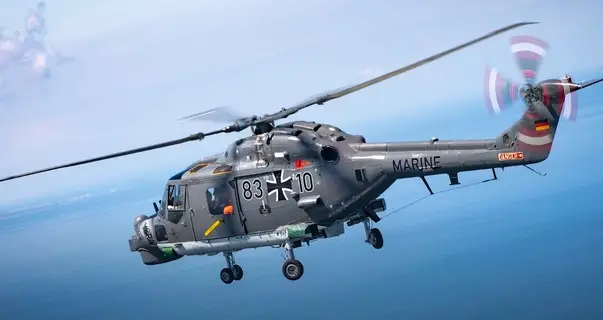
Helicopter Sea Lynx Mk88A. Armament: two MK46 or MU90 torpedoes, 12,7 mm machine gun.
Well, that’s basically all I wanted to tell you about the voyage of the frigate Hessen to the Red Sea and its first real war.
Where he is today, with whom and how he is fighting, it is impossible to find out from official sources.
What conclusions can be drawn?
While I was collecting material for the article, while I was putting it together, writing the text, I was constantly thinking about the difficult, to put it mildly, situation with our Red Banner Black Sea Fleet. The fact that things weren’t going so smoothly for the Germans either didn’t take the weight off my soul. This is not like the saying: “If my barn burns down, it’s not a big deal, the main thing is that the neighbor’s cow dies” - that’s how it sounds.
Using the example of the Germans, this once again led me to the idea that political PR campaigns, parades, exercises, all this is probably necessary. But a war, big or small, immediately puts everything in its place, reveals, firstly, all the problems, from the smallest to the catastrophic and, secondly (God grant that there will be more of this) - emphasizes successes, technical breakthroughs, true decisions, the wisdom of commanders and the heroism of soldiers.
War is a terrible, merciless, unforgiving teacher. And to be an excellent student in this school, everyone needs to do so much. And the assessment and result in this school is human life.
This is what I was thinking about all the time while I was writing about just one naval operation, or rather, about one episode of it, which was and is being carried out by the enemy of Russia.
And I think everyone who gets acquainted with the results of my work will draw their own conclusions. In addition, there are many people registered on our site who, unlike me, are real experts on the navy or fleets.
Information